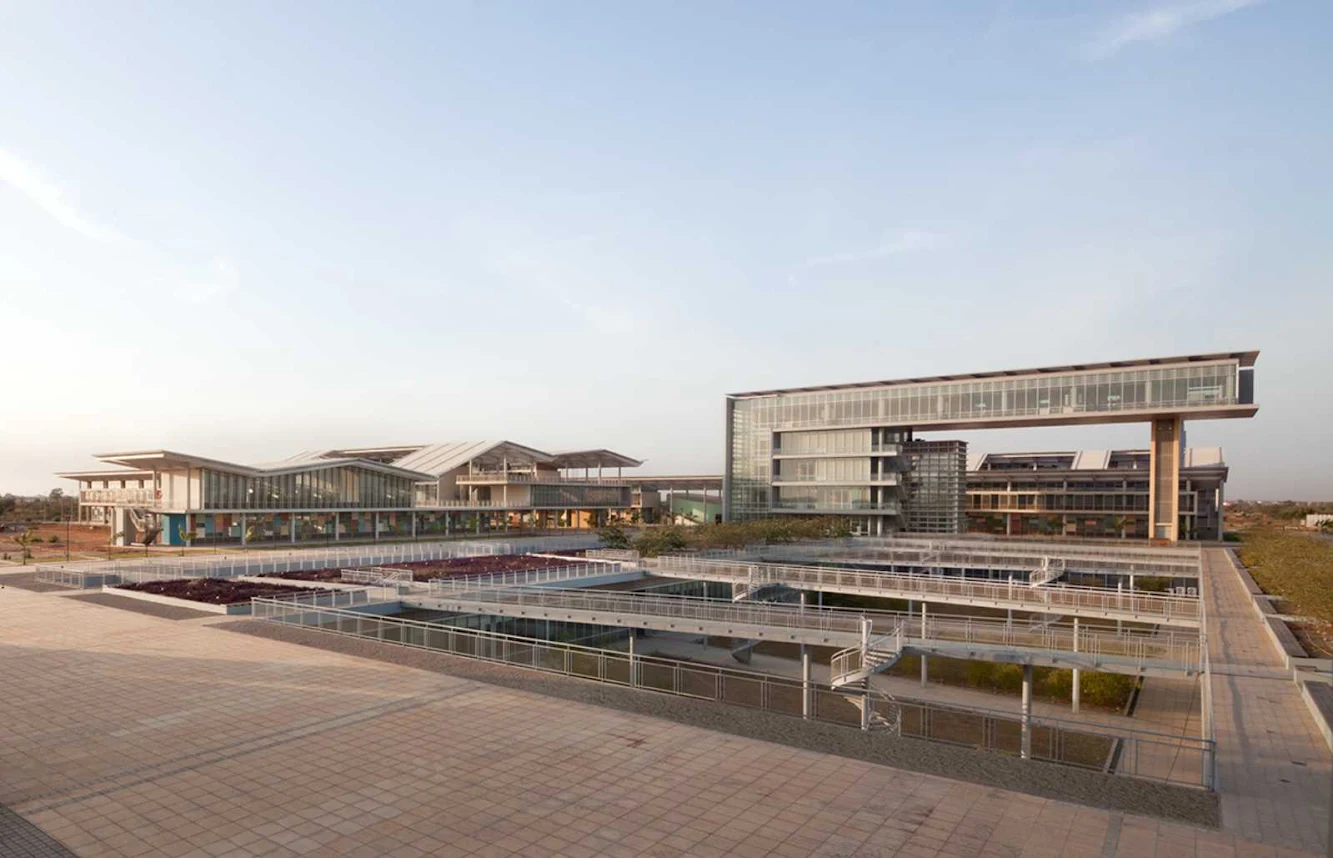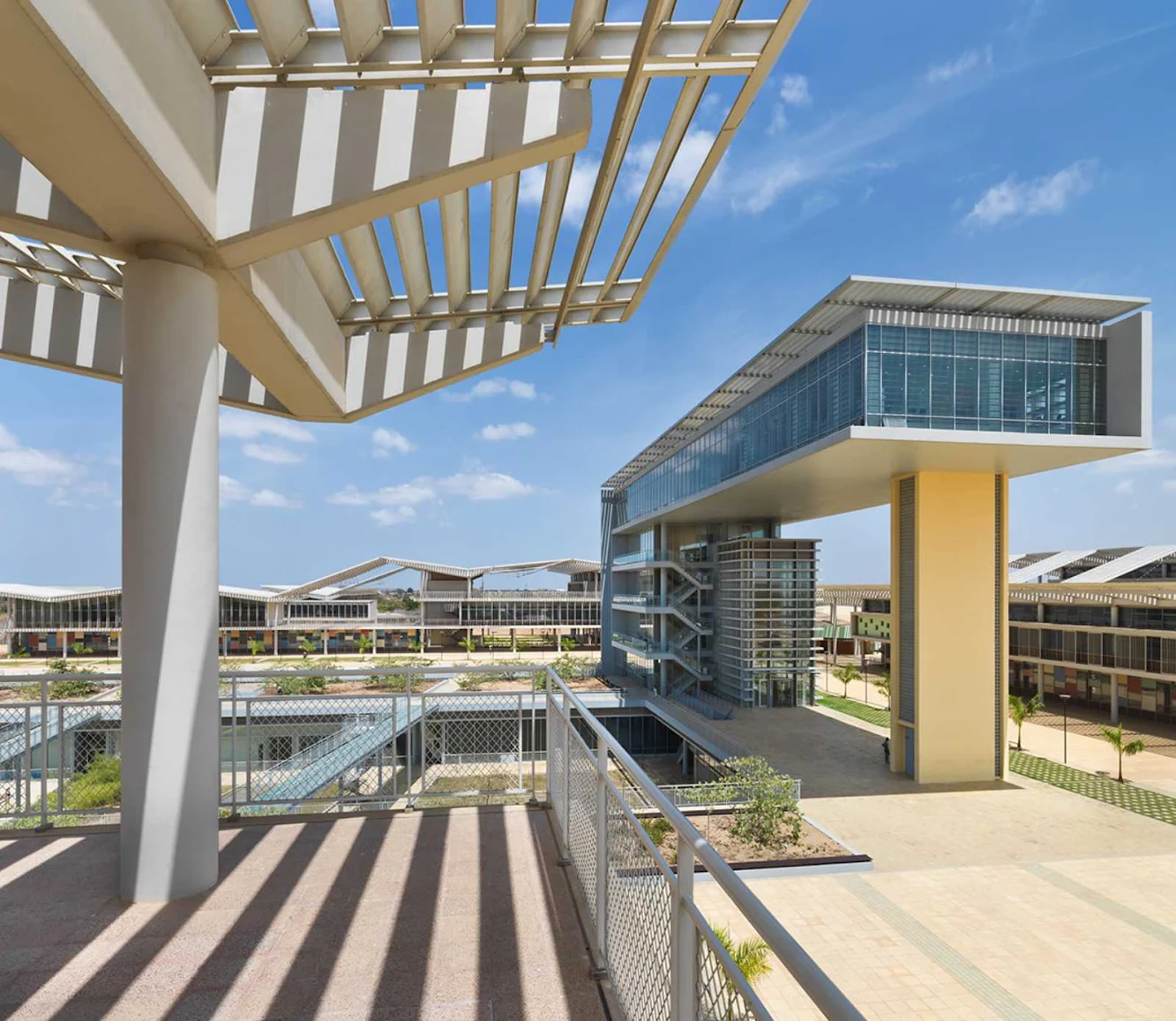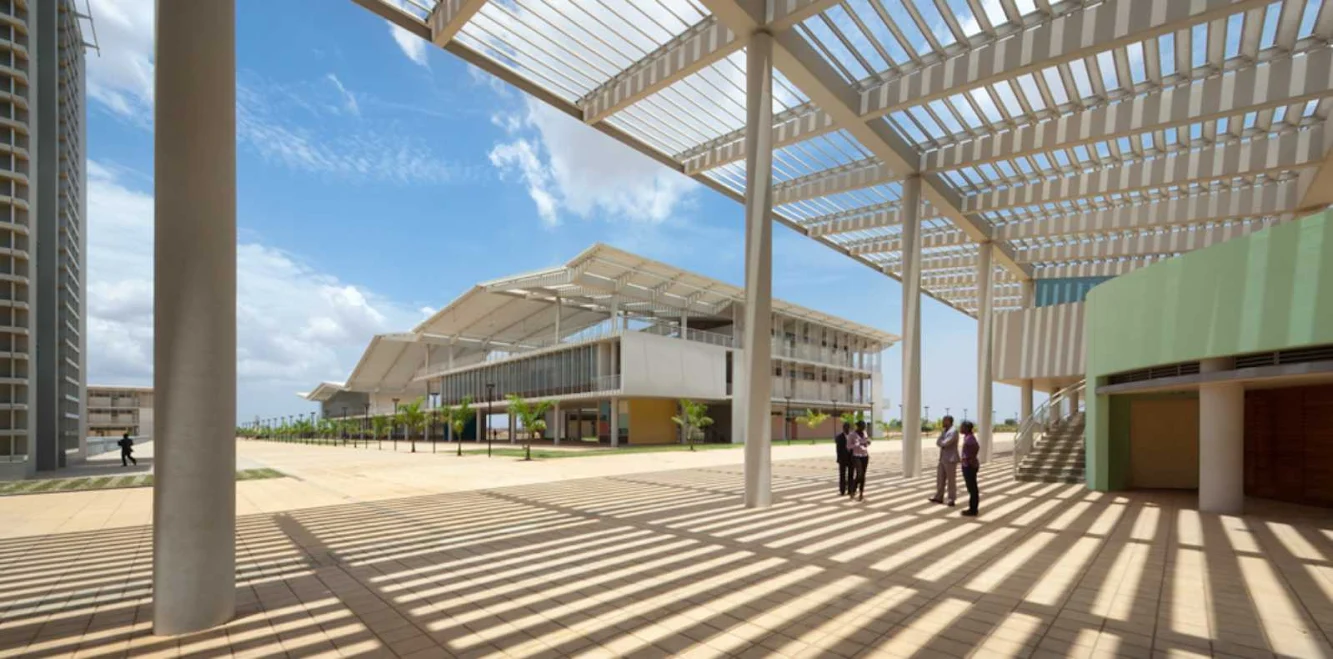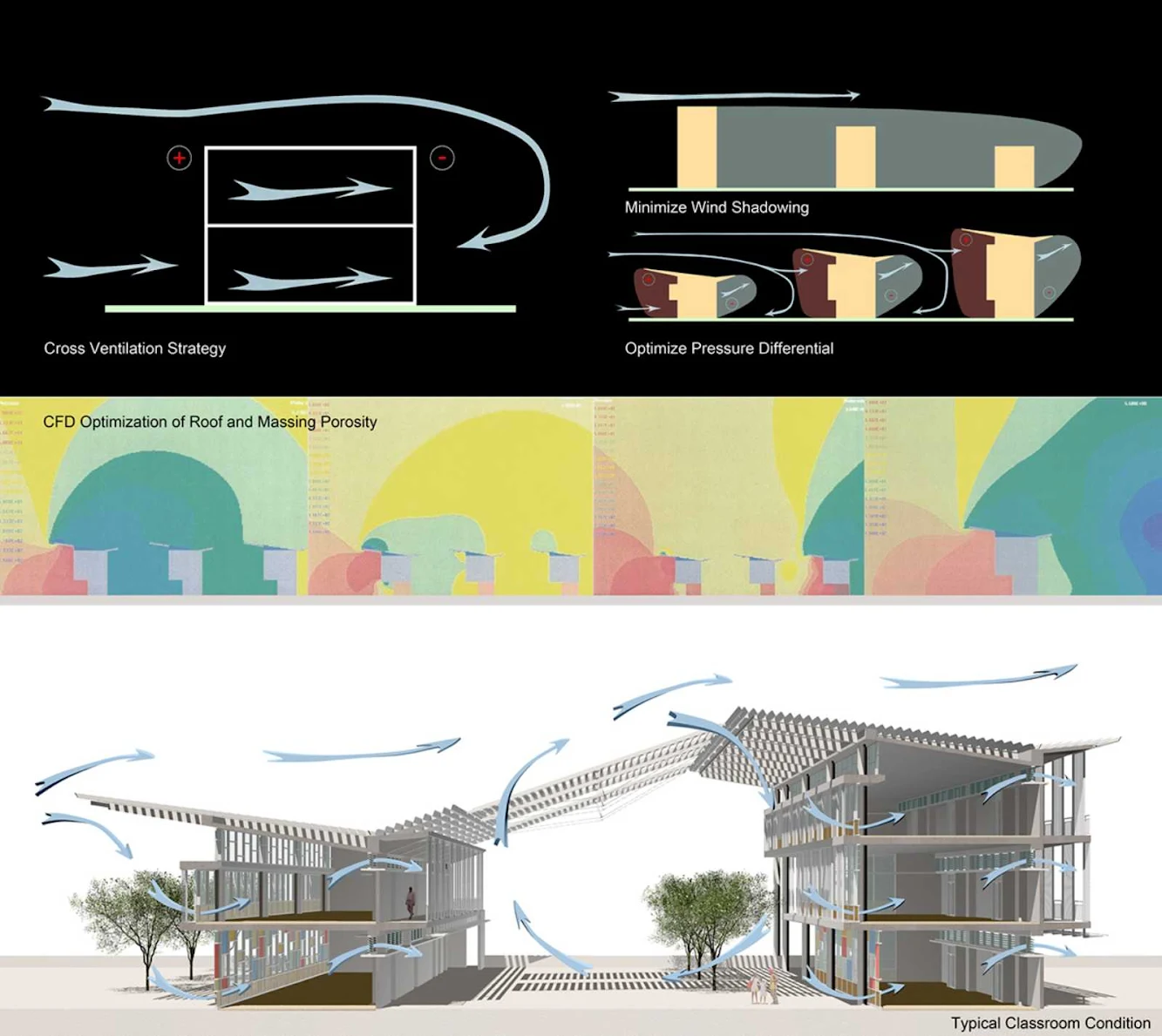
This new national university is sited on a 5,000-acre green field site southeast of Luanda. Our master plan, developed in 2000 and updated in 2009, is designed to accommodate 40,000 students when all phases are complete.

Phase I of the new campus forms the University’s central academic core: four classroom buildings for faculties of chemistry, mathematics, physics and computer sciences; the central library and plaza; a refectory, student union and conference center.

Each college includes seminar and classrooms, office clusters, teaching laboratories, and outdoor assembly classrooms integrated into the courtyards. the central library plaza is a community gathering space as well as an outdoor reading room, and features native plantings, reflecting pools and a sunken garden.

The cantilevered canopy system covers elevated walkways that connect buildings within each college. Its innovative airfoil design encourages air movement around the campus structures and provides solar shading.

Subsequent phases will complete the development around the central plaza adding administration, student residences, food service, sports fields and facilities, and a research zone.

To reduce energy consumption, the architects arranged the academic buildings in what Johnson calls “a simple, linear bar scheme,” with short east-west facades and long north-south facades (adjusted 19 degrees to increase shadows and give prevailing winds—which don't follow compass directions—the maximum cooling effect).

A variety of devices, including painted aluminum sunscreens, allow daylight into the buildings while minimizing solar gain. (Because Luanda is near the equator, sun can shine from north or south, depending on the time of year.) Corridors also buffer classrooms from too much direct sunlight, since a hot corridor is less of an impediment to education than a hot classroom.

But the buildings' most distinctive features may be their roofs, angled to serve as airfoils. When the wind blows, the zigzag surfaces of galvanized and painted steel reduce the air pressure above the buildings.

The decrease in pressure pulls hot air up and out of the classrooms through operable louvers. the louvers, says Johnson, allow air to get through while keeping dust out.

Such methods to keep air moving have been known for centuries, as Doerge points out, but in recent years computer modeling has given architects the ability to fine-tune them for maximum efficiency.






Location: Luanda, Angola Architect: Perkins + Will Area: 418,700 sq Year: 2011